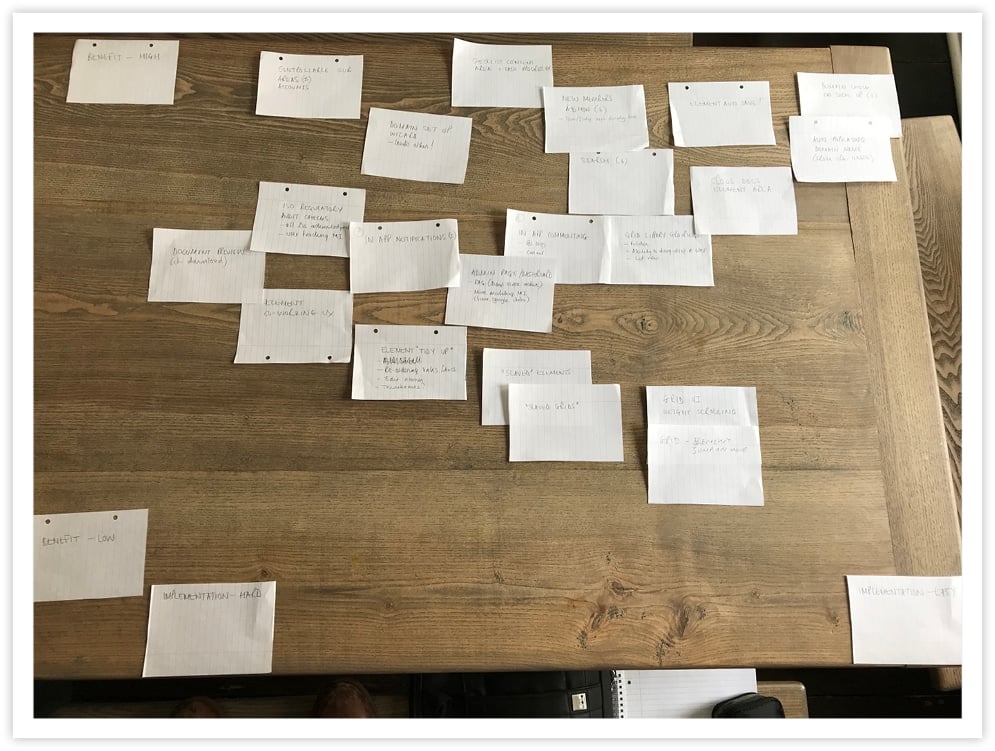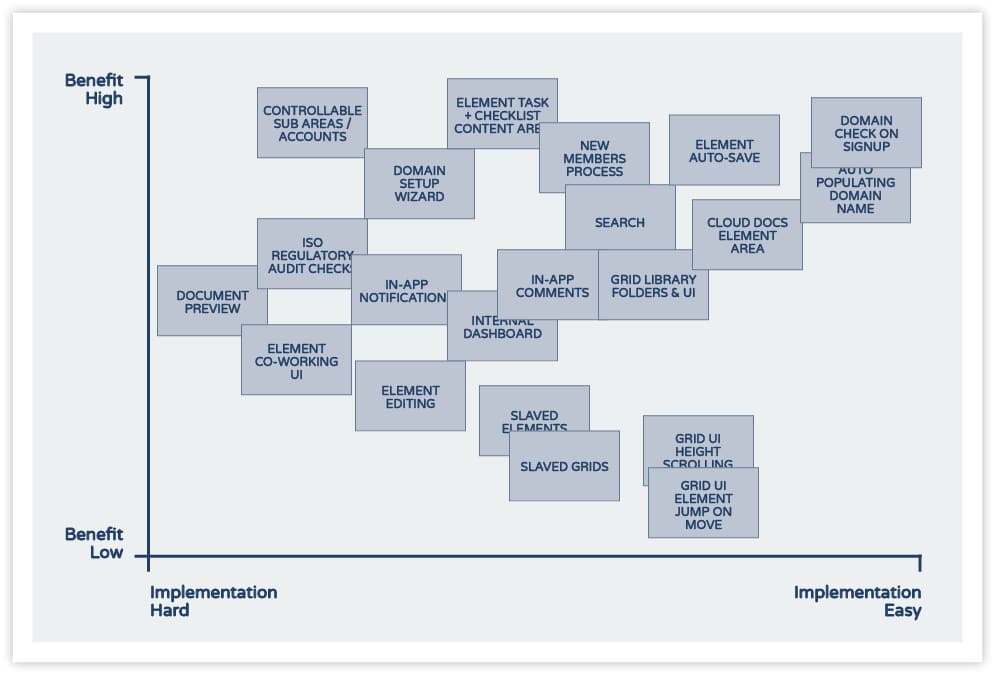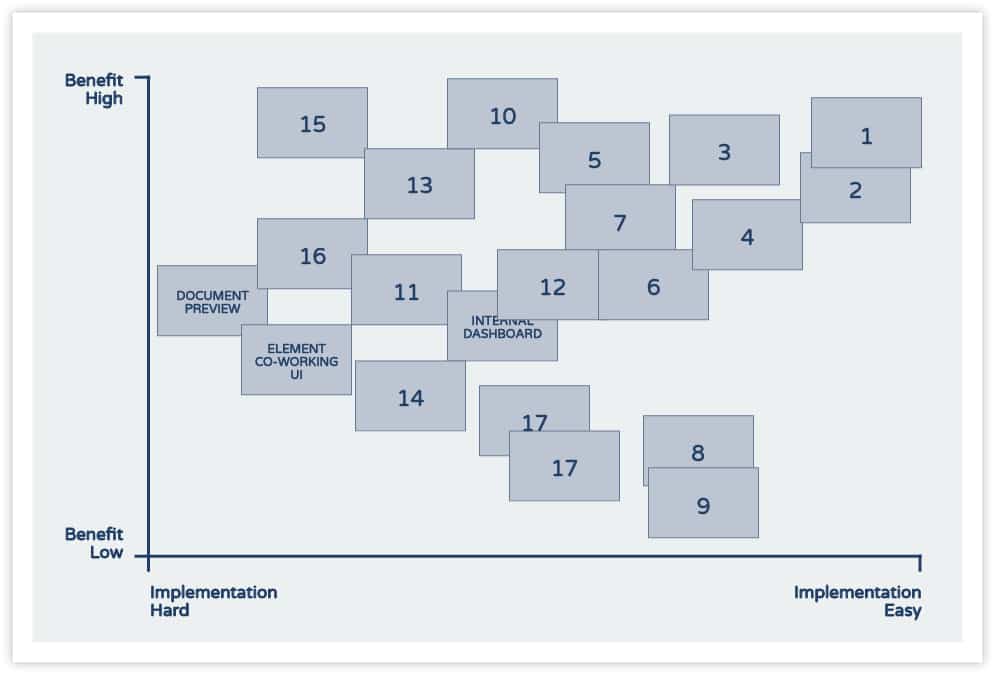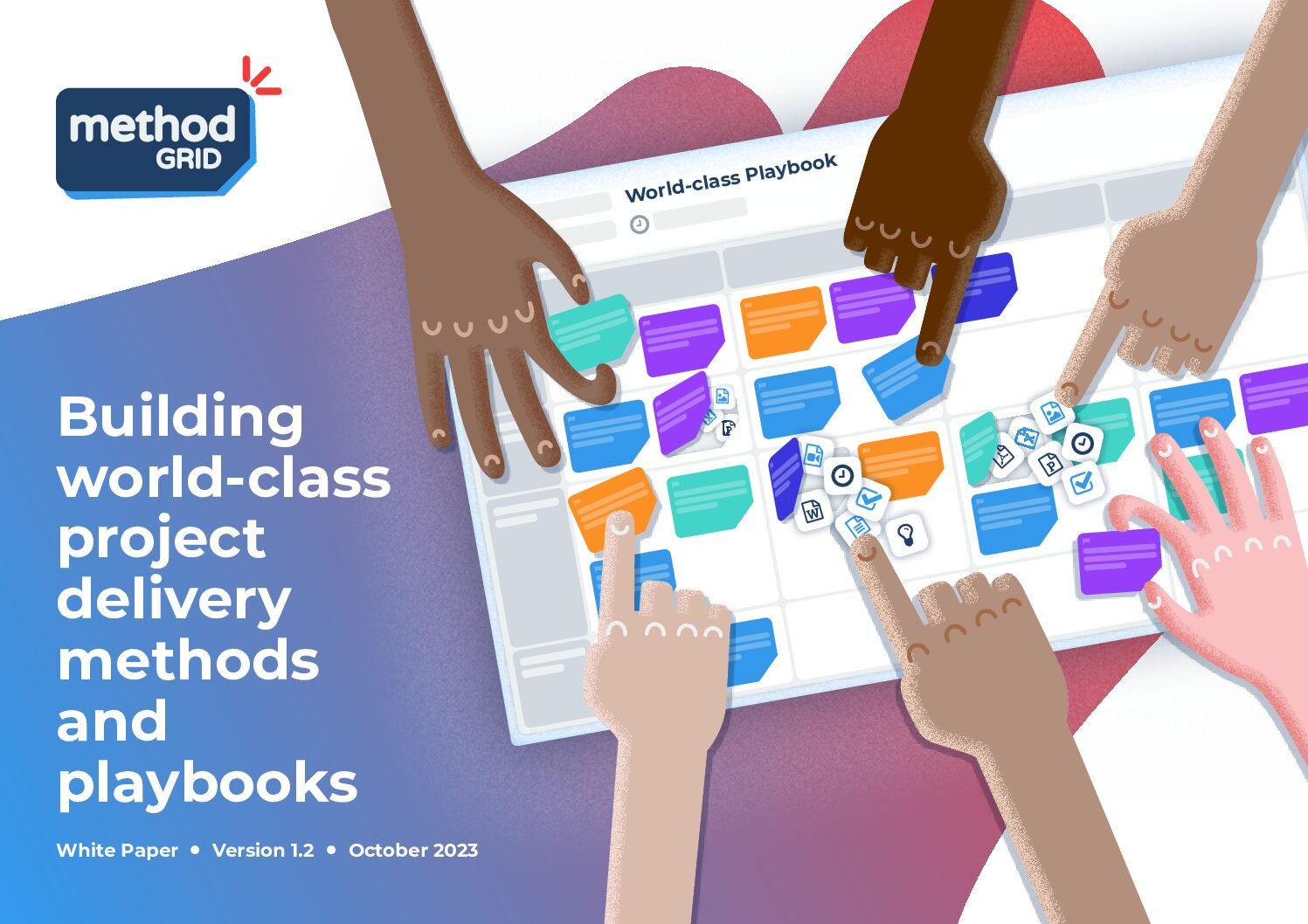What you can expect to see coming next ...
At a recent out-of-office team summit (July 2018), we spent a good portion of our time discussing and planning the new features we want to introduce into Method Grid: our new feature roadmap.
A three-fold approach
We took a three-fold approach to developing and prioritising this list. Essentially, we asked ourselves three questions:
- What do you (our community of users) want? We are always asking for user feedback – specifically what features you would like to see in the future that would accentuate the impact Method Grid has on your business. Fortunately, our community is not shy in making these requests known! We took all this feedback and drew up one big list of features our users really want to see.
- What does the Method Grid team want? We are users of Method Grid too! So we asked ourselves what features we think would take the platform to the next level of utility for us. As to be expected, this was in significant harmony with the community wish list.
- How should we prioritize the development of these new features? Finally, we prioritised this list of features, using a two-by-two matrix – based on two variables: (a) user benefit (low/high); and (b) the development complexity/challenge (low/high).
After much discussion, the results were laid out as below (using a sophisticated facilitation device – a large coffee table!):

Figure: Team Summit | New Feature Roadmap Discussion (coffee table)

Figure: Team Summit | New Feature Roadmap Discussion (summary schematic)
Prioritised new feature roadmap
Working on the logic that the top right (high benefit; relatively easy implementation) is the place to start from , we ordered these requests (with some discussed variation) from the top right to bottom-left. This resulted in the following initial ordering:

Figure: Team Summit | New Feature Roadmap Discussion (by assigned order – see detail below)
New feature roadmap (detailed/ordered)
So, here is the priority list we are now chomping our way through (as a full-time team!):
- Email domain checks on new account sign-ups – to prevent users creating whole new Method Grid domains instead of just joining their organization’s existing account. Previously a common error. [Implemented]
- Auto-populating the domain name on sign up – making it easier for new organizations to get going on Method Grid e.g. if you enter the organization name Acme Ltd, we now auto suggest the domain name: acme.methodgrid.com [implemented]
- Element auto-save – have you ever accidentally lost your changes when editing a grid element? We had (!) and we knew it was a common frustration. To stop this happening we wanted to introduce an auto-save feature (cf. user saving) to the element builder. [implemented] [ See new feature blog > Element auto-save]
- New element content area – cloud document links – we wanted to make it clearer that you can link to your organization’s cloud documents (e.g. Office 365, Dropbox, G Suite, Sharepoint etc.) from your grid elements – so this change involved adding a new content area to this effect. [implemented] [See new feature blog > Element links areas including cloud document links, web links and element internal links]
- Member management – we want to make it easier for architects (especially with larger teams) to manage their account members, from inviting new members to archiving old members. This involved adding a new table view (to make it easier for larger teams), to easily-configure different member types at the point of adding, to do away with the invite step (new members now automatically added) and adding some additional information (e.g. to show when members last accessed). [implemented] [See new feature blog > Improved member management]
- Grid library folders – we want to make it easier to manage all your grids by introducing a configurable folder structure along with the drag/drop ordering of your grids into these folders. This significant new feature will enable us – in the future – to allow access to be configured by folders (for example, consulting firm users can invite their clients into engagement sub-folders – with restricted access to these grids only). [As of blog post date – this is where we are now!]
- Search – we want to make it much easier for you to quickly find a relevant asset within your platform (starting with grids, members, elements and templates) with a simple search function.
- Grid UI (user interface) – we want to improve the way the grid interface works.
- Grid element drag/drop – we want to improve the way you drag/drop elements within your grids.
- Element task checklists – one of the most requested features is the ability to add a task checklist content area within an element. This, in turn, opens up a really exciting aspect of the future Method Grid: the ability to clone master methodologies into specific instances of actual delivery. In these actual delivery instances, users can progress-tick their way through completion of an overall grid. This exciting new feature will allow for powerful summary views. For example, elements containing task checklists will display progress display bars at the summary grid level. Users will also be able to configure such elements to turn a new colour when all tasks completed – thus allowing for engaging summary grid displays.
- In-app notifications – so that all account users are kept up to date with the latest team activity (new grids/elements/templates/comments added etc.) [implemented] [See new feature blog > In-app notifications]
- In-app commenting – introduces the ability to message @ members (received via email and in-app). This to facilitate collaborative IP creation and allow for all members to make suggestions and comments to targeted colleagues.
- Setup wizard – we want to make the initial setup of a new Method Grid account much easier – guiding new users through a logical approach.
- Element editing – we want to improve how you control and edit some existing element areas e.g. re-ordering/editing documents and links.
- Controllable sub areas/accounts – this is another highly requested feature. We want to provide a granular access control system for your Method Grid domain so you can set which members can see certain grids. This new feature will include the ability to add guest users to your domain (with restricted access).
- ISO regulatory audit checks – a number of our users are working to heavily-regulated procedures (that requires them to formally validate that procedural updates are acknowledged by all). For these users, we want to introduce audit checks for grids and elements i.e. to allow account architects to see when new, or updated, content has been accessed, and acknowledged, by account members.
- Master/slave grids and elements – this feature will allow grids to be logically linked such that if an element is updated in a master grid, this is pushed down (automatically) to all linked slave grids.
Now the really important bit – have we got this right, what do you think?
Please let us know in the comments below or by rating these new features in terms of their importance to you












